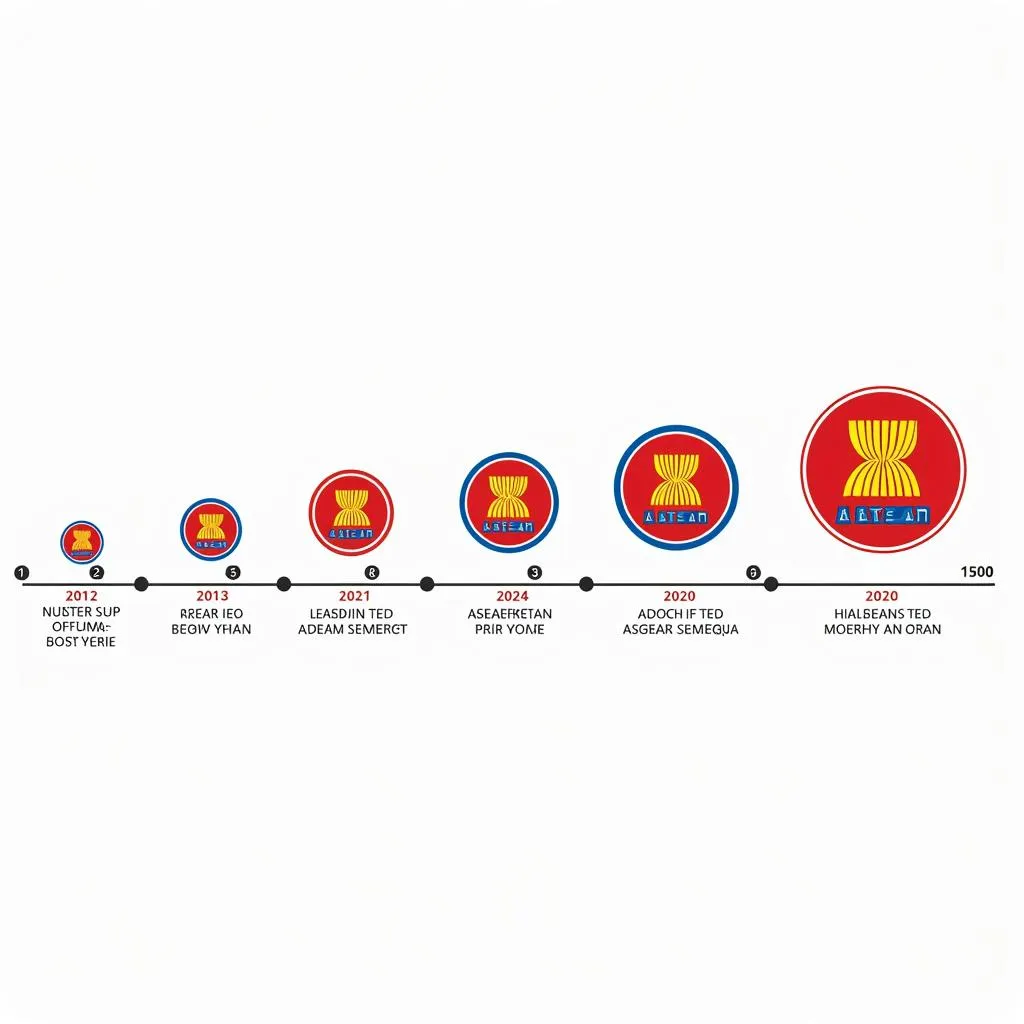The ASEAN emblem, a powerful symbol of unity and cooperation, embodies the shared aspirations and values of the Association of Southeast Asian Nations. More than just a logo, it serves as a visual representation of the organization’s commitment to regional peace, progress, and prosperity.
Deciphering the Design Elements
The ASEAN emblem, adopted in 1997, features a vibrant combination of colors and symbolic elements that reflect the spirit of Southeast Asia. Let’s break down the key components:
- The Ten Stalks of Rice: Representing the ten member states of ASEAN, the bundled rice stalks symbolize unity, solidarity, and prosperity. Rice, a staple food in the region, highlights the shared cultural heritage and interconnectedness of the member nations.
- The Circle: Encompassing the rice stalks, the blue circle signifies the unity and harmony among ASEAN member states. The circular shape also represents completeness and the continuous pursuit of progress.
- The Colors: The vibrant colors of the emblem hold significant meaning. Blue represents peace and stability, red signifies courage and dynamism, white symbolizes purity, and yellow stands for prosperity.
 ASEAN Emblem Colors
ASEAN Emblem Colors
The Evolution of the ASEAN Emblem
The current ASEAN emblem is not the first iteration. The organization’s visual identity has evolved over the years, reflecting its growth and transformation:
- 1967-1997: The original emblem featured a map of Southeast Asia within a yellow circle, surrounded by six brown rice stalks. The six stalks represented the founding members: Indonesia, Malaysia, the Philippines, Singapore, and Thailand.
- 1997-Present: With the inclusion of Brunei Darussalam, Vietnam, Laos PDR, and Myanmar, the emblem was redesigned to incorporate ten rice stalks and a new color palette. The circular shape remained, signifying continuity and the enduring spirit of cooperation.
 Evolution of the ASEAN Emblem
Evolution of the ASEAN Emblem
The ASEAN Emblem: A Beacon of Hope and Aspiration
Beyond its aesthetic appeal, the ASEAN emblem holds profound significance for the people of Southeast Asia. It serves as a:
- Symbol of Unity and Harmony: In a region marked by diversity, the emblem stands as a reminder of the shared values and common goals that unite the member states.
- Representation of Progress and Prosperity: The emblem reflects ASEAN’s commitment to economic growth, social development, and the well-being of its people.
- Source of Pride and Identity: For citizens of ASEAN member states, the emblem evokes a sense of belonging and shared identity within the larger Southeast Asian community.
Frequently Asked Questions About the ASEAN Emblem
1. Why is rice chosen as a symbol in the ASEAN emblem?
Rice is a staple food and a significant agricultural product in all ASEAN countries, making it a powerful symbol of the region’s shared culture and heritage.
2. What does the blue circle in the ASEAN emblem represent?
The blue circle signifies unity, harmony, and the spirit of cooperation among ASEAN member states.
3. How often has the ASEAN emblem been changed?
The ASEAN emblem has been changed once since the organization’s inception. The current emblem was adopted in 1997.
4. Where can I see the ASEAN emblem displayed?
The ASEAN emblem is prominently displayed on official ASEAN documents, websites, flags, and at ASEAN events.
5. Can I use the ASEAN emblem for commercial purposes?
The use of the ASEAN emblem is subject to certain guidelines and restrictions.
Need More Information?
For further inquiries about the ASEAN emblem and related topics, please reach out to us.
Contact us:
Phone: 0369020373
Email: [email protected]
Address: Thon Ngoc Lien, Hiep Hoa, Bac Giang, Vietnam
Our customer support team is available 24/7 to assist you.

